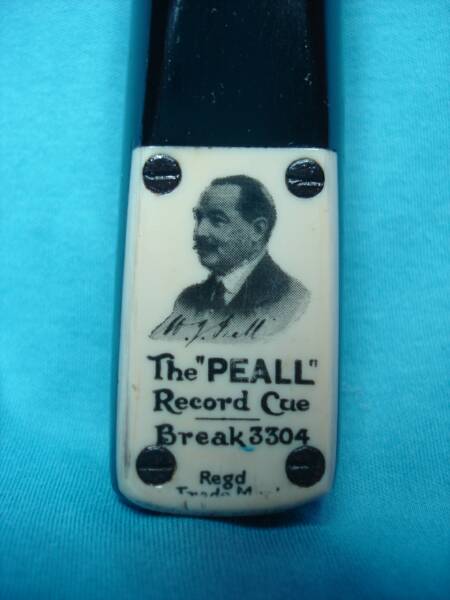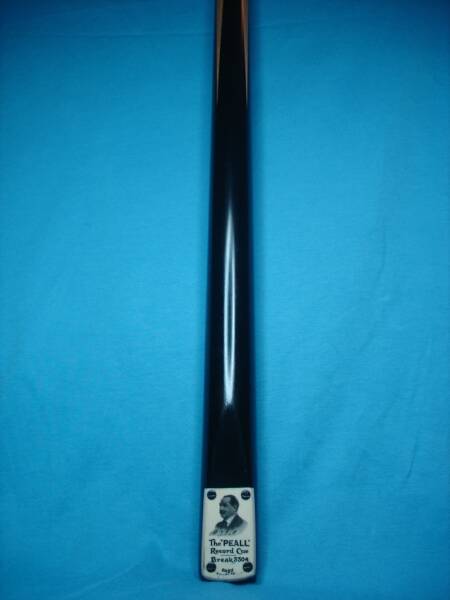© 2007 - Gordon Radford
The Cue Collector - The Peall Picture Badge
This is an example of a Peall Picture Badge. It has a plain ebony butt hand-spliced onto an ash shaft. The badge is plastic.
William J. Peall was a Londoner, born at St Pancras on 31 December 1854. He began playing billiards at the age of 13 and remained an amateur until the age of 26.
Peall won his first professional match in 1881 but, with a high break of only 56, there was nothing in this performance to hint at the great player he was to become.
Within three years, Peall had made his first thousand break and established himself as a force in English billiards.
During his career, Peall made no less than 49 breaks over 1,000. This included one break over 3,000 (his highest break of 3,304) and eight breaks over 2,000.
Peall is generally regarded as the greatest ever spot stroke player. He specialised in potting the red off the pyramid spot. In one game, in January 1890, he compiled a break of 2,170 which included 555 consecutive spot strokes.
In 1898, Peall assisted in changing the rules of billiards to require the red ball to be placed on the centre spot after two consecutive pots off the pyramid spot. This is the modern rule which abolished long runs of consecutive spot strokes. It destroyed Peall's supremacy.
Peall retired from professional billiards around the turn of the century. He lived to the ripe old age of 98.
The Peall Picture Badge was made by Peradon & Co, probably during the period from the early 1900s through to the late 1930s. The example shown in the photographs is thought to date from the 1920s.
circa 1920-1930

